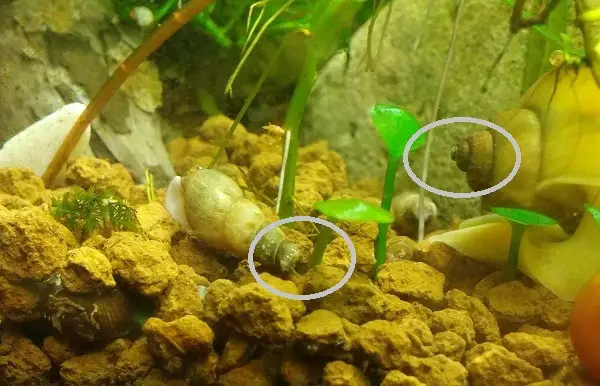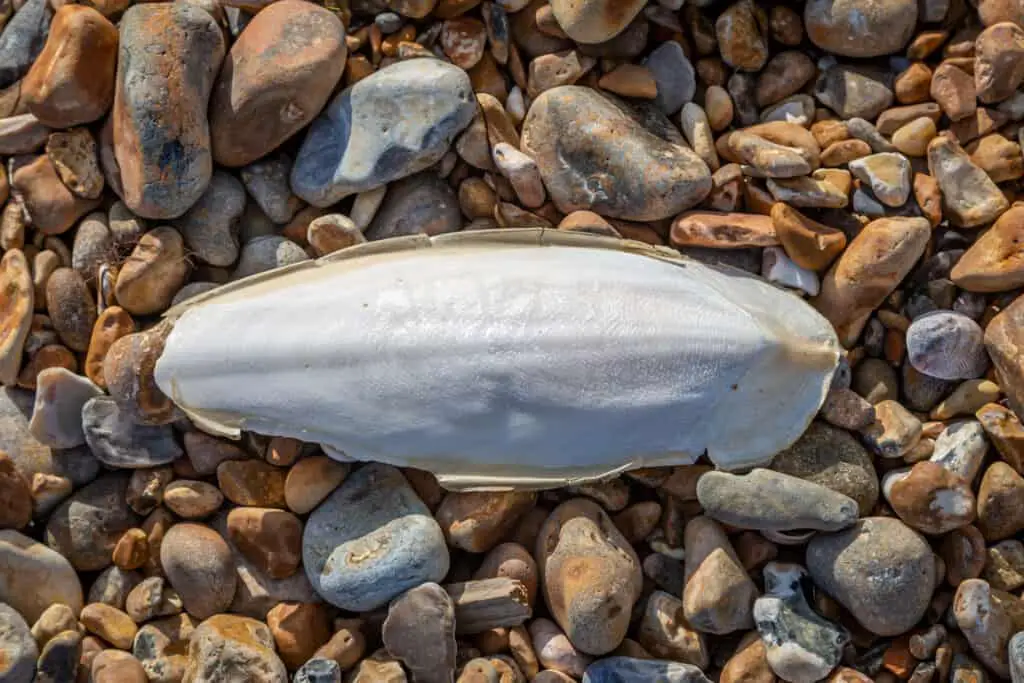Originally posted on May 11, 2023 @ 3:00 am
Last Updated on 6 months by admin
Keeping an aquarium is a fascinating hobby that requires a lot of care and attention. There are several factors that determine the health of your aquatic pets, including the water quality, temperature, and the type of food you provide. Another crucial aspect of aquarium maintenance is the addition of cuttlebone. Cuttlebone is a natural source of calcium that aids in the growth and development of fish and other aquatic organisms. In this article, we will discuss how much cuttlebone to add to your aquarium and the benefits of doing so.
If you are new to aquarium keeping, you might be wondering how much cuttlebone to add to your tank. Adding too much or too little cuttlebone can have adverse effects on your aquatic pets. Therefore, it is essential to understand the appropriate amount of cuttlebone to add to your aquarium. In this article, we will provide you with all the necessary information regarding the quantity of cuttlebone to add to your aquarium to ensure the optimal health of your aquatic pets.

How Much Cuttlebone to Add to Aquarium?
If you are a responsible aquarium owner, you would know that taking care of the aquatic life inside the tank is not an easy task. From choosing the right fish to maintaining the right water chemistry, there are a lot of factors that need to be considered. One such factor is adding cuttlebone to the aquarium. Cuttlebone is a calcium-rich supplement that is added to the aquarium to maintain healthy bones and shells of the aquatic life residing inside. But the question is, how much cuttlebone should you add to the aquarium? Let’s find out.
Understanding Cuttlebone and its Benefits
Cuttlebone is the internal shell of a cuttlefish, a mollusk that belongs to the same family as squids and octopuses. It is a rich source of calcium, which is essential for the growth and maintenance of bones and shells of the aquatic life inside the aquarium. Calcium is also required for muscle and nerve function, blood clotting, and enzyme activity. Therefore, adding cuttlebone to the aquarium can provide numerous benefits to the aquatic life, including:
- Preventing bone and shell deformities
- Improving bone density and strength
- Stimulating growth and reproduction
- Reducing stress and disease susceptibility
Cuttlebone is available in pet stores in various sizes and shapes, including flat, curved, and spiral. It can be added to the aquarium in its natural form or crushed into powder.
How Much Cuttlebone Should You Add?
The amount of cuttlebone to be added to the aquarium depends on various factors, including the size of the aquarium, the number and type of aquatic life, and the current calcium level in the water. As a general rule, you can add one inch of cuttlebone per ten gallons of water. For example, if you have a 30-gallon aquarium, you can add three inches of cuttlebone. However, it is important to monitor the calcium level in the water regularly using a test kit and adjust the amount of cuttlebone accordingly.
It is also important to note that adding too much cuttlebone can lead to calcium overdose, which can be harmful to the aquatic life. Symptoms of calcium overdose include cloudy water, algae growth, and lethargic behavior of the fish. Therefore, it is recommended to start with a small amount of cuttlebone and gradually increase it as per the requirement.
Cuttlebone Vs Other Calcium Supplements
Apart from cuttlebone, there are other calcium supplements available in the market, such as limestone, aragonite, and coral. However, cuttlebone is considered to be the most effective and safe supplement for aquarium use. This is because cuttlebone dissolves slowly in water, providing a steady supply of calcium. On the other hand, other supplements can dissolve quickly, leading to a sudden change in the water chemistry, which can be harmful to the aquatic life.
Moreover, cuttlebone is more affordable and easily available than other supplements. It also has a neutral pH, which does not affect the water chemistry. Therefore, cuttlebone is the preferred choice of many aquarium owners.
Conclusion
Adding cuttlebone to the aquarium can provide numerous benefits to the aquatic life. However, it is important to add the right amount of cuttlebone and monitor the calcium level regularly to avoid any harm to the aquarium inhabitants. Cuttlebone is considered to be the most effective and safe supplement for aquarium use and is more affordable and easily available than other supplements. So, go ahead and add some cuttlebone to your aquarium to maintain healthy and happy aquatic life.
Frequently Asked Questions
What is cuttlebone and why is it used in aquariums?
Cuttlebone is a hard, chalky internal shell of a cuttlefish. It is often used in aquariums to provide a source of calcium and other minerals for aquatic animals, particularly for those that have hard shells or exoskeletons such as snails, crabs, and shrimp. Cuttlebone can also help to maintain the pH level of the water.
It is important to note that cuttlebone should not be used as the sole source of calcium in an aquarium, as it can dissolve quickly and cause fluctuations in the water chemistry. It should be used in conjunction with other calcium supplements and a balanced diet for the aquatic animals.
How much cuttlebone should I add to my aquarium?
The amount of cuttlebone to add to an aquarium depends on the size of the tank and the number and size of the aquatic animals in it. As a general rule of thumb, one small cuttlebone is sufficient for a 10-gallon aquarium. For larger tanks, more cuttlebone can be added as needed.
It is important to monitor the water chemistry after adding cuttlebone, as it can cause fluctuations in pH and hardness levels. If the water becomes too alkaline or hard, it may be necessary to remove some of the cuttlebone or perform a partial water change.
How often should I add cuttlebone to my aquarium?
Cuttlebone does not need to be added to an aquarium on a daily basis. Depending on the size of the cuttlebone and the size of the tank, it may provide a source of calcium and other minerals for several weeks or even months. It is important to monitor the water chemistry regularly and add more cuttlebone as needed.
If the water chemistry is stable and the aquatic animals are healthy, it may not be necessary to add cuttlebone frequently. However, if the animals show signs of calcium deficiency or the water chemistry becomes unstable, it may be necessary to add cuttlebone more often.
Can cuttlebone be used in saltwater aquariums?
Yes, cuttlebone can be used in saltwater aquariums to provide a source of calcium and other minerals for the aquatic animals. However, it is important to choose a cuttlebone that is free from any additives or preservatives, as these can be harmful to the animals and the water chemistry.
It is also important to monitor the water chemistry regularly and adjust the amount of cuttlebone as needed. In some cases, other calcium supplements may be needed to maintain the proper water chemistry and the health of the aquatic animals.
What are some alternatives to cuttlebone for providing calcium in an aquarium?
There are several alternatives to cuttlebone for providing calcium and other minerals in an aquarium. These include crushed coral, aragonite sand, and calcium supplements such as calcium hydroxide or calcium carbonate.
It is important to choose the appropriate supplement for the type of aquarium and the aquatic animals in it. Some supplements may be more suitable for freshwater aquariums, while others may be more suitable for saltwater aquariums. It is also important to monitor the water chemistry regularly and adjust the amount of supplement as needed.

Cuttle Bone in Fish Tank
In conclusion, adding cuttlebone to your aquarium can provide numerous benefits, but it is important to add the correct amount to avoid any negative effects. A general rule of thumb is to add one inch of cuttlebone per ten gallons of water, but it is always best to monitor the pH levels and adjust accordingly.
Remember to prepare the cuttlebone properly before adding it to your tank, as untreated cuttlebone can release harmful chemicals. Boiling and soaking the cuttlebone in fresh water for several hours is recommended.
Overall, adding cuttlebone to your aquarium can improve the health of your fish and plants, and create a more balanced environment. With the right amount and proper preparation, you can enjoy the benefits of cuttlebone in your aquarium for years to come.
